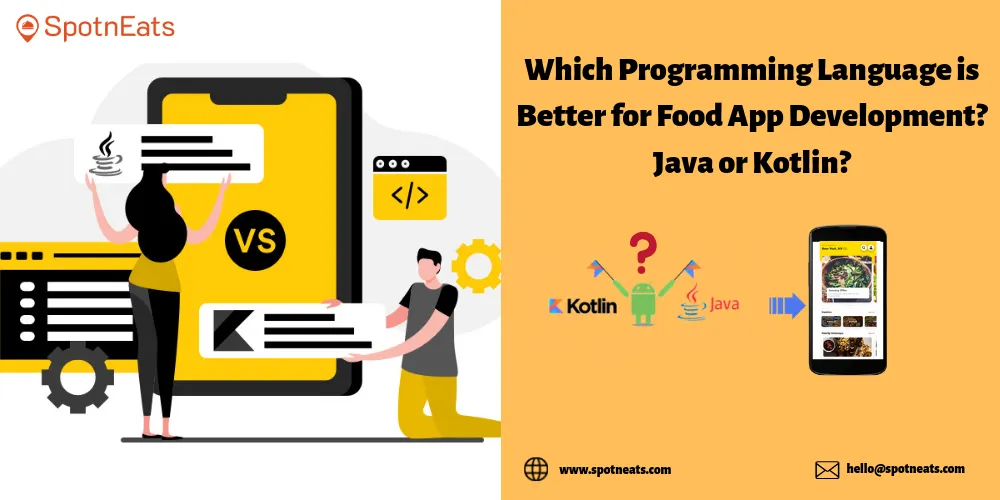A Comparison of Kotlin and Java in Food App Development
App development for businesses has become an irresistible one since the increase in the usage of apps. When it comes to app development, there are lots of programming languages used by us. The most notable languages used are Java and Kotlin. Java has been used for a long time but is still predominant. Recently, a lot of developers have also come to favor Kotlin. A quick comparison between Java and Kotlin is in order.

Explaining Kotlin
Kotlin, a cross-platform, statically typed programming language, has emerged as a game-changer in the world of app development. Designed to enhance the coding experience, Kotlin seamlessly interoperates with Java, making it a preferred choice for many developers.
Evolution of kotlin
Over its evolution, Kotlin's multi-platform capability has continually improved, allowing developers to create applications for various platforms effortlessly. The latest version of Kotlin showcases enhanced mobile scalability, particularly beneficial for food ordering and delivery applications. Major players in the on-demand space, including Uber, Airbnb, Ola, and Swiggy, are making the switch to Kotlin, recognizing the advantages it offers.
Comparison of Java and Kotlin
Java, with its extensive libraries and open-source tools, remains a stalwart in programming languages. However, the language is often criticized for its complexity and time-consuming development process. For startups, especially in the online food delivery sector, where resources are limited, Kotlin's efficiency becomes a key advantage.
While Kotlin outperforms Java in several aspects, the coexistence of both languages is feasible. Kotlin's interoperability with Java allows developers to leverage Java's libraries and tools seamlessly. As Kotlin continues to evolve, the possibility of it becoming an independent programming language looms on the horizon.
One notable area where Kotlin excels is code conciseness. Unlike Java, Kotlin prioritizes readability and conciseness, resulting in less error-prone code. Kotlin's support for all Integrated Development Environments (IDEs), including Android Studio, further enhances its appeal. Object declaration, parameter language, and extension functions are among the features that empower Kotlin, making it a powerful choice for developers.
The transition from Java to Kotlin is relatively smooth, with existing Java libraries and source tools seamlessly integrated into Kotlin projects. This interoperability, coupled with Kotlin's concise and readable code, makes it an attractive proposition for developers.
The above comparison states that both play their game and are strong at some points. Based on your business requirements, you can select the programming language.
conclusion
In determining whether to switch to Kotlin, factors such as app complexity and development time play a crucial role. For simple solutions, Kotlin is a clear choice, while moderately complex apps may benefit from Kotlin's priority. In highly complex scenarios, where scalability and a year-long development timeline are crucial, Java remains a strong recommendation.
SpotnEats is a readymade app solution for food delivery startups. The app we develop is geared towards entrepreneurs seeking continuous improvement and quick adaptation to emerging technologies. Reach out to hello@spotneats.com for inquiries and discover how SpotnEats can elevate your food delivery business.